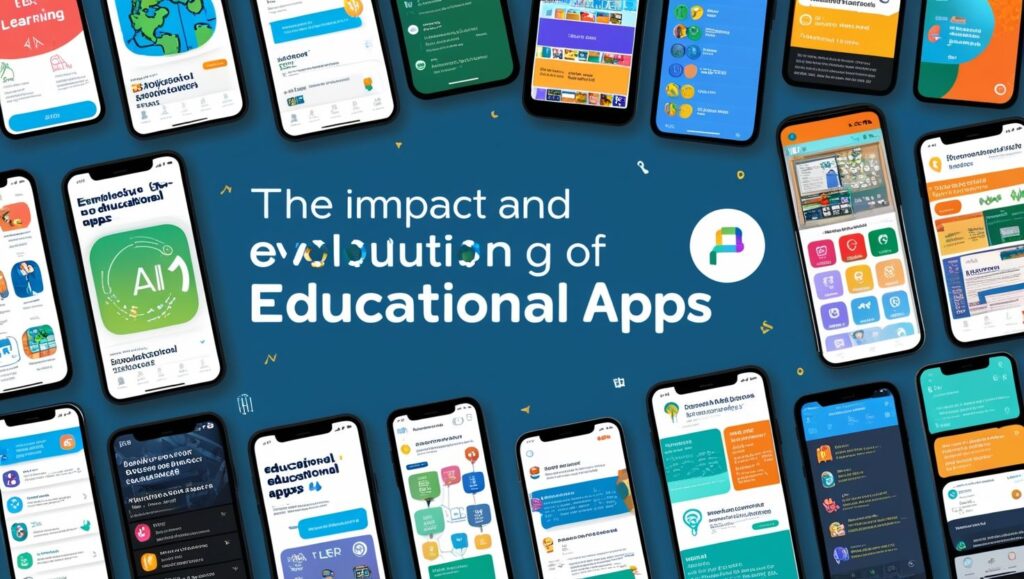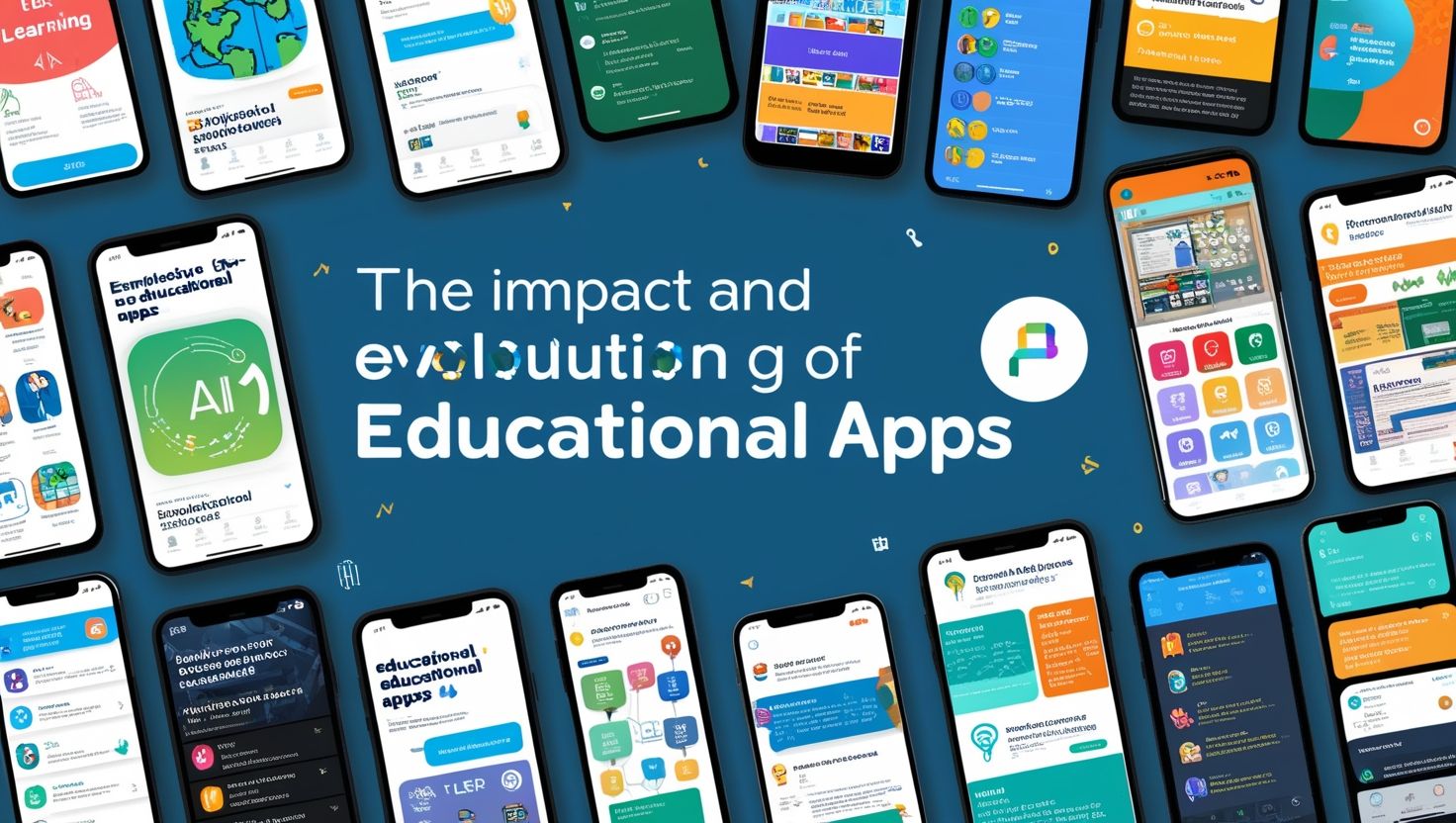Introduction
The Impact and Evolution of Educational Apps, In recent years, educational apps have revolutionized the way people learn, making knowledge more accessible, engaging, and tailored to individual needs. The proliferation of smartphones and tablets has turned these devices into powerful tools for education, bringing information, skills, and resources right to users’ fingertips. These apps cater to various age groups and learning preferences, supporting students in formal education, professionals seeking new skills, and lifelong learners who enjoy exploring diverse topics.
Educational apps have gained even more traction due to the global shift toward digital learning, accelerated by the COVID-19 pandemic. With schools closed and students required to study from home, these apps provided much-needed support for remote learning. They offer advantages that traditional education struggles to match: accessibility, adaptability, and interactivity. In this article, we’ll explore the rise of educational apps, their benefits, popular categories, challenges, and future directions in education.
The Rise of Educational Apps
The educational technology (EdTech) industry has been on a steady rise, with educational apps forming a significant part of this growth. Early attempts at EdTech focused on hardware, like computers and projectors in classrooms, and interactive websites. However, as mobile technology evolved, educational apps gained prominence. By 2023, the global educational app market was estimated to reach over $100 billion, indicating the enormous demand and potential for continued expansion.
This growth stems from various factors, including the increased use of smartphones and tablets and higher internet accessibility worldwide. Additionally, the push toward remote learning highlighted the flexibility of educational apps, which allow students to learn at their own pace from anywhere. The EdTech sector is also supported by significant investments, with governments, corporations, and venture capitalists funding startups that bring new innovations to education.
Benefits of Educational Apps
Educational apps provide several advantages over traditional learning methods, making them a popular choice among students, teachers, and parents. Here are some of the key benefits:
- Accessibility and Flexibility Educational apps make learning accessible anytime, anywhere. Students no longer have to rely on fixed class schedules or locations to acquire knowledge. They can study from home, on the go, or even while traveling, using apps to access materials, attend lectures, or participate in interactive exercises. This flexibility particularly benefits working professionals and individuals in remote areas who may not have access to formal educational institutions.
- Personalization of Learning One of the major advantages of educational apps is their ability to tailor learning experiences to individual users. With the integration of artificial intelligence (AI) and machine learning, many apps analyze users’ strengths, weaknesses, and preferences to deliver customized content. For instance, language learning apps like Duolingo use AI to adjust the difficulty level based on the user’s progress, making learning more efficient and enjoyable.
- Increased Engagement and Interactivity Traditional learning methods can sometimes feel monotonous and disengaging, especially for younger students. Educational apps, however, often incorporate gamification, quizzes, and interactive exercises that make learning fun. Apps like Khan Academy and BrainPOP use animations, videos, and games to explain complex concepts in an engaging way. This approach keeps students motivated, encouraging them to spend more time learning and retain information better.
- Cost-Effectiveness Many educational apps offer high-quality content at little to no cost, democratizing access to knowledge. Instead of paying for expensive textbooks or tutoring, students can use free or affordable apps to get the information they need. Additionally, apps are often cheaper to maintain and update than printed materials, making them a cost-effective solution for both students and educational institutions.

Popular Educational App Categories
Educational apps cater to various learning needs and goals, with some of the most popular categories including:
- Language Learning Apps Language learning apps, like Duolingo and Babbel, have made language acquisition more accessible. These apps use techniques like spaced repetition, vocabulary games, and real-time feedback to help users improve their language skills. They offer bite-sized lessons that fit into busy schedules, enabling people to learn new languages at their own pace.
- STEM Education Apps Apps focused on Science, Technology, Engineering, and Math (STEM) have become essential in making complex subjects more accessible and engaging. For example, Khan Academy offers comprehensive tutorials on a range of STEM topics, while Photomath helps students solve math problems by providing step-by-step explanations. These apps are particularly popular among high school and college students, who often struggle with abstract concepts.
- Productivity and Skill-Building Apps Productivity and skill-building apps, such as Notion, Evernote, and Skillshare, support students and professionals in developing organizational and professional skills. These apps help users track their goals, manage tasks, and acquire new skills in areas like coding, design, and marketing. They encourage self-paced learning and professional development, which are increasingly valuable in today’s dynamic job market.
- Early Childhood Education Apps For young children and learners, apps like ABCmouse and Proloquo2Go offer targeted learning experiences. ABCmouse focuses on foundational skills like reading, math, and art for young children, while Proloquo2Go helps nonverbal individuals communicate. These apps offer adaptive learning tools and support early childhood education and inclusivity.
Challenges and Concerns
While educational apps have numerous benefits, they also present certain challenges and concerns that need to be addressed:
- Screen Time and Health Impacts Excessive screen time is a growing concern among parents, educators, and health professionals. Prolonged use of educational apps can lead to eye strain, poor posture, and a sedentary lifestyle. Additionally, spending too much time on devices may affect mental well-being, leading to issues like anxiety and reduced attention span. To mitigate these risks, experts recommend balanced screen time and encourage offline activities to promote overall health.
- Privacy and Data Security Issues Many educational apps collect personal data to provide a personalized experience. However, this raises privacy concerns, particularly for young users. Without stringent data protection measures, sensitive information may be exposed or misused. App developers and educational institutions must prioritize data security by implementing robust security protocols and adhering to privacy regulations like the Children’s Online Privacy Protection Act (COPPA) and the General Data Protection Regulation (GDPR).
- Educational Quality and Effectiveness The quality and effectiveness of educational apps vary widely. While some apps are developed with input from educators and follow a structured curriculum, others may lack academic rigor. There is a need for quality control to ensure that apps deliver meaningful, accurate, and pedagogically sound content. Accreditation bodies or educational organizations could play a role in reviewing and certifying apps that meet specific standards.
The Future of Educational Apps
The future of educational apps is promising, with advancements in technology poised to make them even more powerful learning tools. AI and machine learning will continue to improve personalization, adapting content to each learner’s pace and needs. Augmented Reality (AR) and Virtual Reality (VR) are also expected to play a significant role in creating immersive learning experiences. For example, medical students could use VR apps to simulate surgeries, while history students could take virtual tours of ancient civilizations.
Educational apps may also bridge the gap in underserved communities by providing access to resources that would otherwise be unavailable. With increased mobile penetration and internet accessibility, these apps could democratize education globally, helping people in remote areas gain valuable skills and knowledge.
Moreover, hybrid learning models, which combine traditional classroom methods with digital tools, may become the norm. In such a setup, educational apps can complement in-person learning by offering supplementary materials, assignments, and assessments. Schools and universities may increasingly adopt educational apps as integral parts of their curricula, further cementing their role in modern education.
Conclusion
Educational apps have brought a significant shift in the way people learn, breaking down traditional barriers to education and making knowledge accessible to all. They offer numerous benefits, from personalization and engagement to cost-effectiveness and flexibility. However, like any tool, they come with their own set of challenges, including privacy concerns, screen time issues, and questions of quality.
As technology advances, educational apps will continue to evolve, incorporating new features that enhance learning experiences. With proper regulation and mindful usage, educational apps have the potential to transform the global education landscape, making learning more inclusive, interactive, and impactful for generations to come.
In the end, educational apps should be viewed as complementary to traditional education—a tool to enhance learning, not replace it. As we move forward, the focus should remain on creating apps that truly serve educational needs, empowering learners everywhere.

5 thoughts on “The Impact and Evolution of Educational Apps”
Comments are closed.